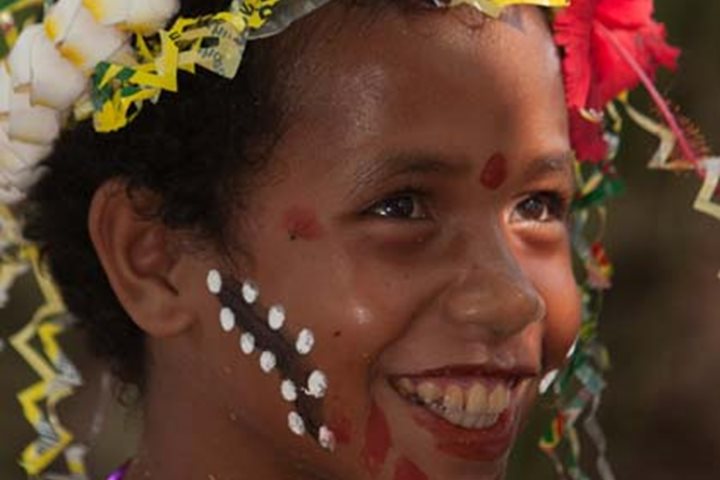We’re at sea, heading towards the Torres Strait aboard the National Geographic Orion. The sun is bright and the sea a gorgeous blue green. I decide to get some exercise by walking around the deck on level five.
I have never been on an expedition ship before, only big luxury liners. The National Geographic Orion’s exercise walkway is not as long as those on the bigger ships, but I find it just the right length as I do lap after lap in the sunshine. After a while, I come to think of it as a metaphor for my entire experience on the ship: smaller and more intimate. On a big ship I’d walk past people I had never seen before. On the National Geographic Orion I not only knew the names of everyone I passed, but I had also dined with them and knew something about their lives.
A naturalist appeared, scanning the horizon with his binoculars. I asked him a question about the blue whales we had seen two days earlier. He answered by telling me the various places on earth blue whales hang out. I wasn’t getting cold scholarly information, but the personal observations of someone who has seen these huge creatures all over the planet. A few minutes later I hear a guest ask another naturalist a question about a flock of seabirds skimming the ocean in front of us. Again, the answer is a mix of scientific fact and personal experience.
It’s 4:00 p.m. now and we’re passing by islands in the Torres Strait. A National Geographic expert is on deck giving us inside information on the World War II activity that had taken place here.
On other ships I’d meet the Captain at a welcoming party, shake his hand and never see him again. On the National Geographic Orion, I’ve had three chats with the Captain, gone swimming with him in the deep blue sea, and all of us have an open invitation to his always-open and welcoming bridge.
Friendly, smaller, intimate, knowledgeable and informative with a warm family feeling. My expedition on the National Geographic Orion is everything I expected and more.









